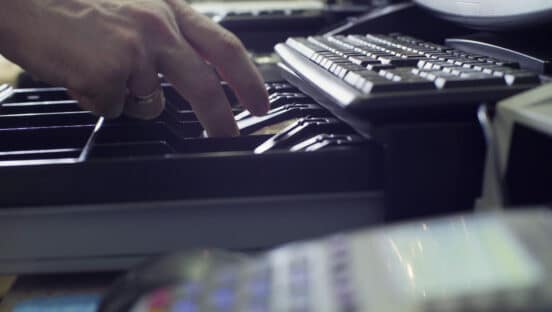Sponsored by RTI.
Quick-service restaurant operators often rely on third-party providers to come in and clean the hoods, flues, and fans in their kitchens. This can often upset kitchen schedules and routines, creating mess and requiring temporary closures that may result in lost revenue.
“There are a lot of touch points which may be affected by a third-party exhaust service,” says Alex Ferguson, the AutoMist commercial leader for Restaurant Technologies. “Downtime is a big concern for operators who may have to close their kitchens while the exhaust system is serviced.”
But despite the status quo, restaurants now have another option for cleaning their exhaust systems, according to Ferguson. Automated cleaning systems such as AutoMist operate at regular intervals throughout the day, removing residue before it builds up. By eliminating manual cleaning, operators can avoid shutting down operations to accommodate inspections and services. This ensures that kitchen staff can maintain cleanliness and fire safety standards without interruption.
Operators who implement an automated exhaust cleaning system will save money on recurring—and sometimes unreliable—third-party servicing, as well as recoup costs because the will not have close down during servicing and inspections.
In addition, keeping exhaust systems spotless through daily, automated cleaning ensures a safer work environment for operators and employees.
“Safety in the kitchen is a big concern for operators, and when a third-party service cleans the exhaust, there’s a lot of uncertainty around that,” Ferguson says. “The process of keeping the exhaust system clean is one of the biggest pain points in a restaurant kitchen.”
According to Ferguson, it’s very difficult for third-party cleaning services to adequately clean the entire exhaust system. There are horizontal areas of flue systems in particular that many servicers will identify as inaccessible, but will still pass inspections.
“Grease fires are a very significant concern for restaurants,” Ferguson says. “There could be 90 days of waste build-up between third-party cleanings, and that creates a very dirty, unsafe environment.”
Automated systems eliminate the need for third-party services by installing sprayers along the hood and up the flue to the exhaust fan, which then deploys a programmable detergent spray. The detergent is administered daily to keep the entire exhaust system in a constant state of cleanliness. By ensuring that build-up never accumulates in any area of the exhaust system, operators can rest easier, knowing their risk for grease fires has been significantly reduced.
“When kitchen exhaust systems are unclean, it affects the air quality in the kitchen,” Ferguson says. “It’s a dirty process and when there’s build-up, that can get circulated by system fans.”
It can also be difficult for kitchen staff to work around or recover service standards immediately following scheduled maintenance. Having additional people on site means more clean-up is needed in order to ensure sanitary surfaces are not affected by servicers.
By replacing irregular manual exhaust cleaning by a daily, automated cleaning system, operators can ensure that their kitchen staff are working in a clean, healthy environment.
“At any point during the day, operators can see that their exhaust systems are in a constant state of clean,” Ferguson says. “That improves performance not only of the equipment itself but of employees who have to engage with those systems on a regular basis.”
By Erin McPherson













